Gentlemen’s Guide: Bangkok’s 5 Best Barber Shops
These top 5 barber shops in Bangkok are where gentlemen can elevate ...
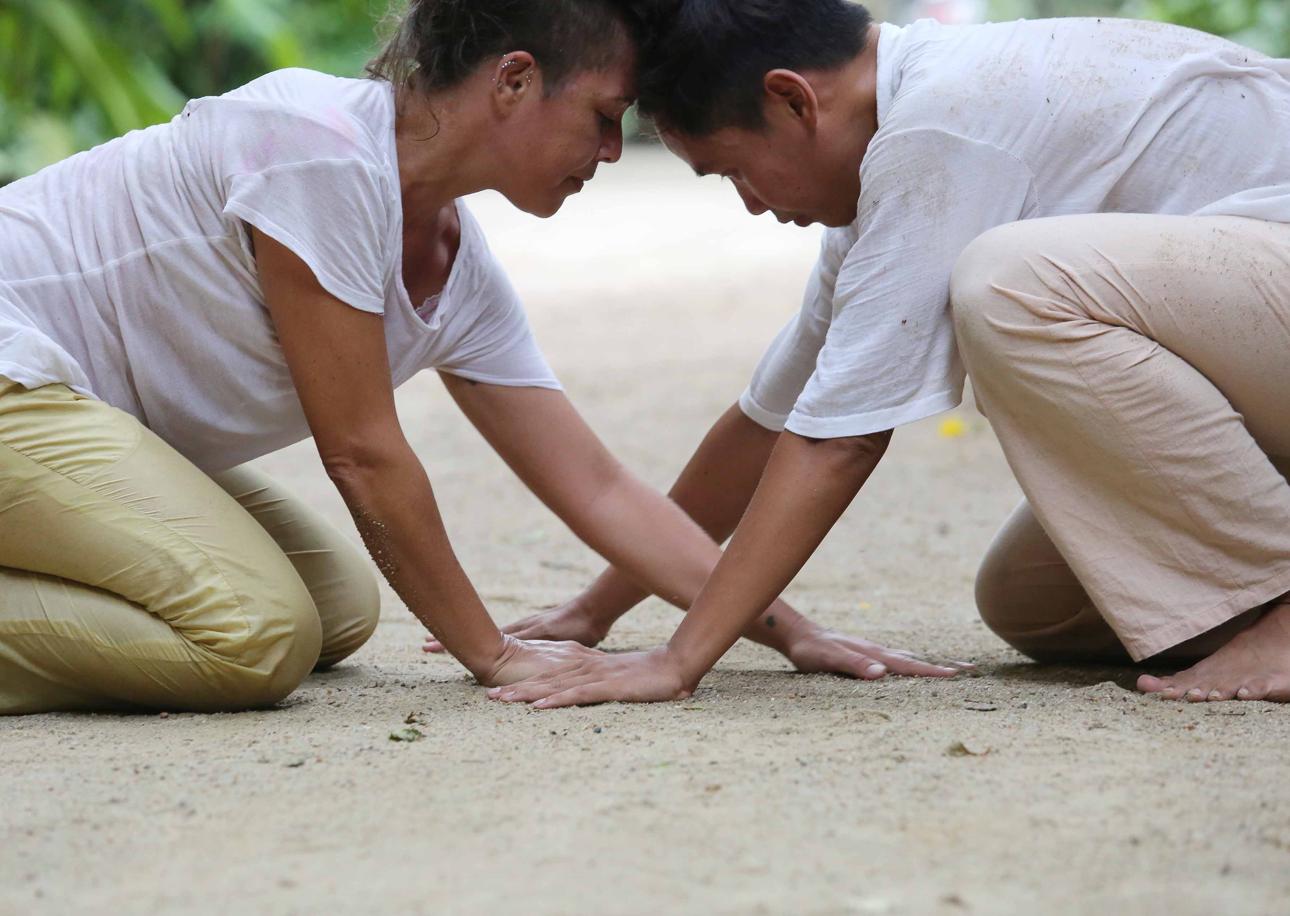
This story first appeared in Koktail Magazine Issue 1.
Photos courtesy of Uthanporn Pithansombat.
Once reputed for raucous full moon parties, Koh Phangan is starting to reveal her softer side. Reprieved by Covid-19 restrictions from the influx of drunken revellers, the island has begun a slow discernible shift towards a more ecologically aware and community-minded mode of tourism. Small enclaves of long-term residents have emerged, comprised of artists, activists, and eco-custodians who are committed to living with and learning from their natural surroundings in a more respectful and restorative manner. Drawing inspiration from the classical elements—earth, water, fire, and air— we meet with individuals whose passions and projects aptly embody each of Mother Nature’s building blocks, giving rise to some of Koh Phangan’s most unique offerings.
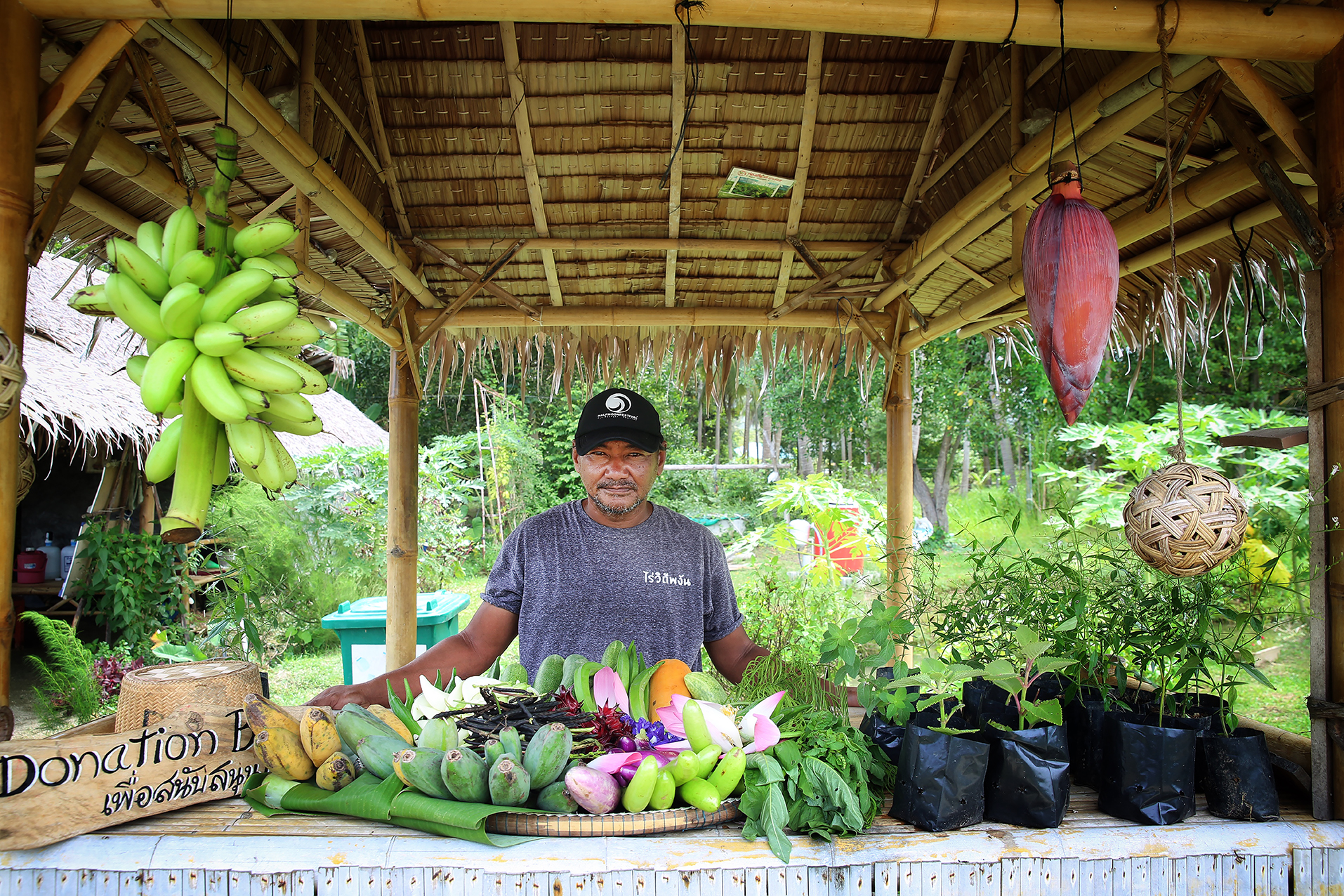
Rai Vithee regenerative agriculture has brought new life to the community
Travel restrictions have devastated tourist-reliant economies like Koh Phangan, leaving many of the local workforce without jobs, income and living essentials. Early in the pandemic, emergency food aid initiatives sprung up from local and foreign communities, bridged by Thai Gulf-based NGO EcoThailand’s bilingual network. Simultaneously, longer-term solutions for more self-sufficient food supplies were explored, including community gardens. Out of the island’s six garden groups, Rai Vithee emerged as top contender, owing largely to Phangan native Treewit Jongjitt’s unwavering commitment. Treewit and nine other municipal officials each donated a month’s salary to finance the garden, while Apichart Limuwan, mayor of Phangan Municipality, donated the use of his old rice field. With further financial and strategic support from EcoThailand, Rai Vithee evolved to become a valuable research and education resource, open for the study of local plants, medicinal herbs, permaculture, and progressive agricultural practices.
In the garden, plants are in various stages of growth. Snake plant saplings seek shade under leafy turmeric shoots. Waxy sweet potato vines interlock in lush jumbles. Delicate squash flowers hint at hardy fruit to come. In the burgeoning plots of the medicinal garden, Thai beautician-turned-gardener Kanokluck “Leela” Jumpadang animatedly introduces us to her cultivation. There’s immune-boosting plu khao (chameleon plant), throat-soothing hu suar (Mexican mint), collagen-rich bai bua bok (gotu kola) and fah talai jone (green chiretta), a super herb sanctioned by the Thai medical community for treating mild symptoms of Covid-19. Two successful harvests of the fah talai jone plant were donated to local quarantine facilities on the island.
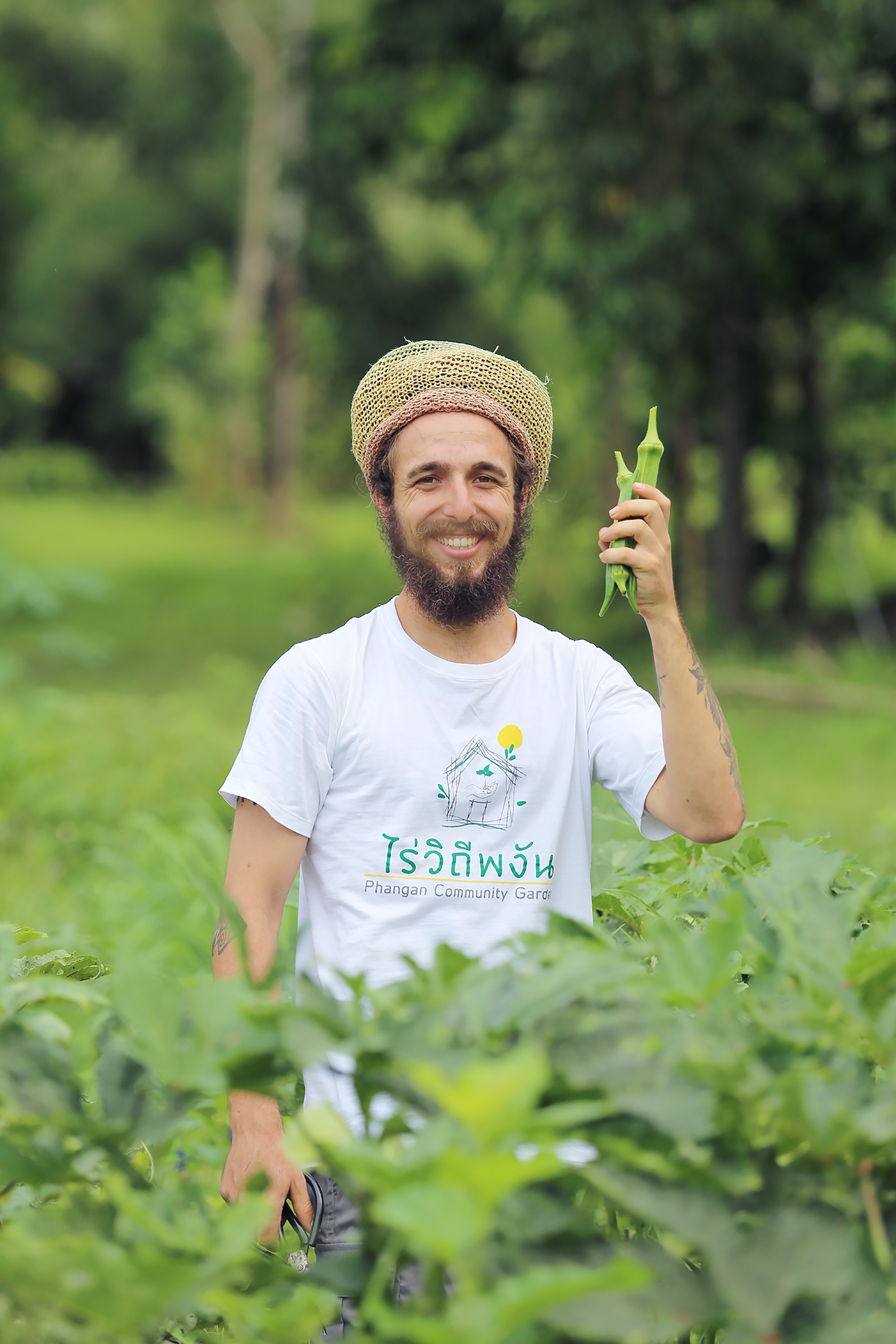
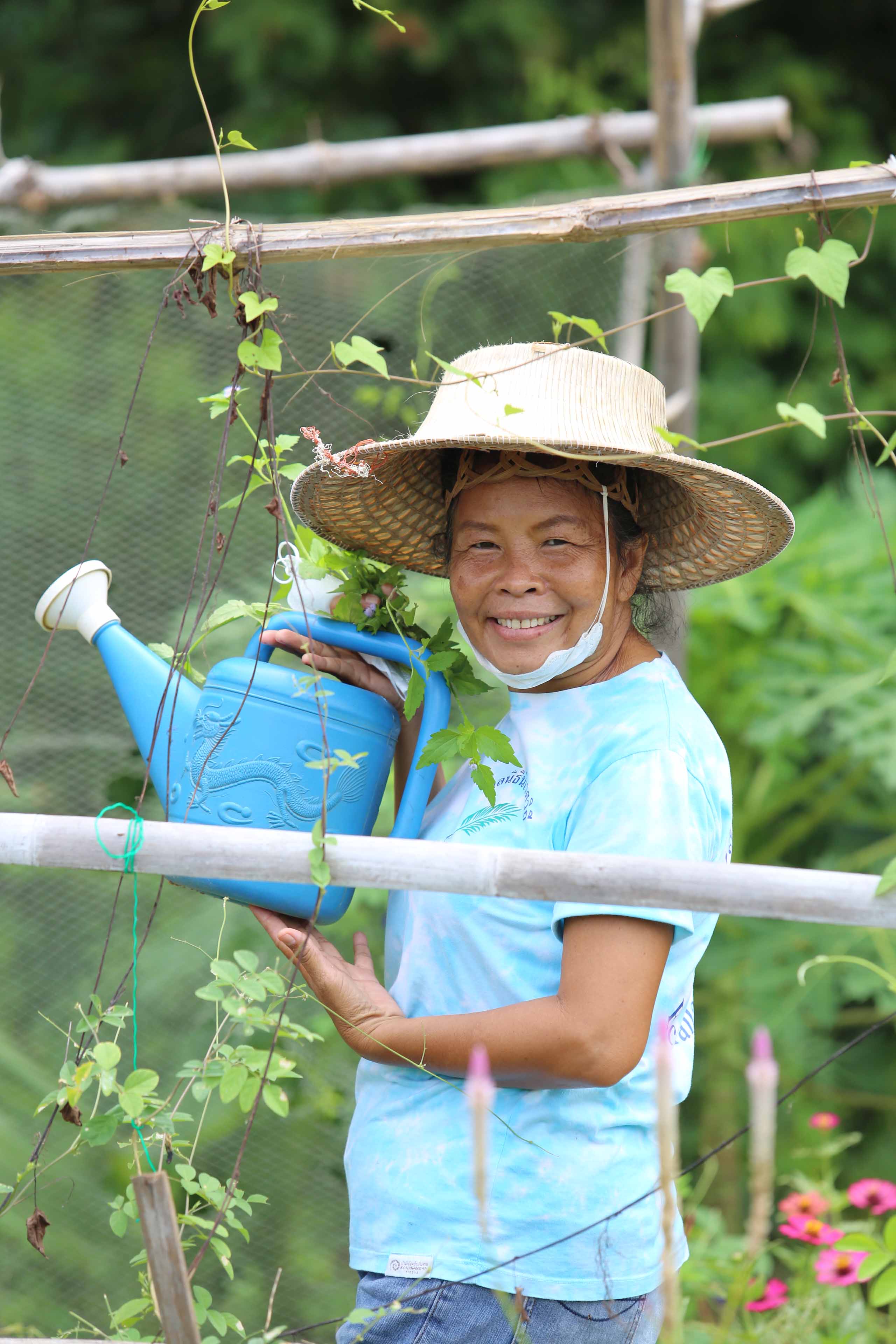
“Food, medicine, even beauty products… it’s empowering to know we can grow our own. These plants have been here all along, just waiting for us to rediscover them,” laughs Leela. Suddenly, she lets out a delighted squeal, gesturing to a nearby stalk. “She’s excited as these are our first tomatoes,” Miquel “Miki” Espona i Perez beams. Having worked on several farms across Thailand for the past three years, the Catalonian musician heads up Rai Vithee’s regenerative agriculture program, set on a flourishing plot of jungle-fringed land that only a few months ago laid barren. “We took the opportunity to experiment on a small scale, thinking, ‘How do we make the desert green again?’, ” explains Miki. “We considered the history: who has worked here? Has it been moved? What about the rain?” All these factors helped to inform the various methods Miki would eventually use to revitalise the land, zeroing in specifically on soil health. “Where does the plant get its food from? The soil. If you have good soil, you can grow virtually anything.”
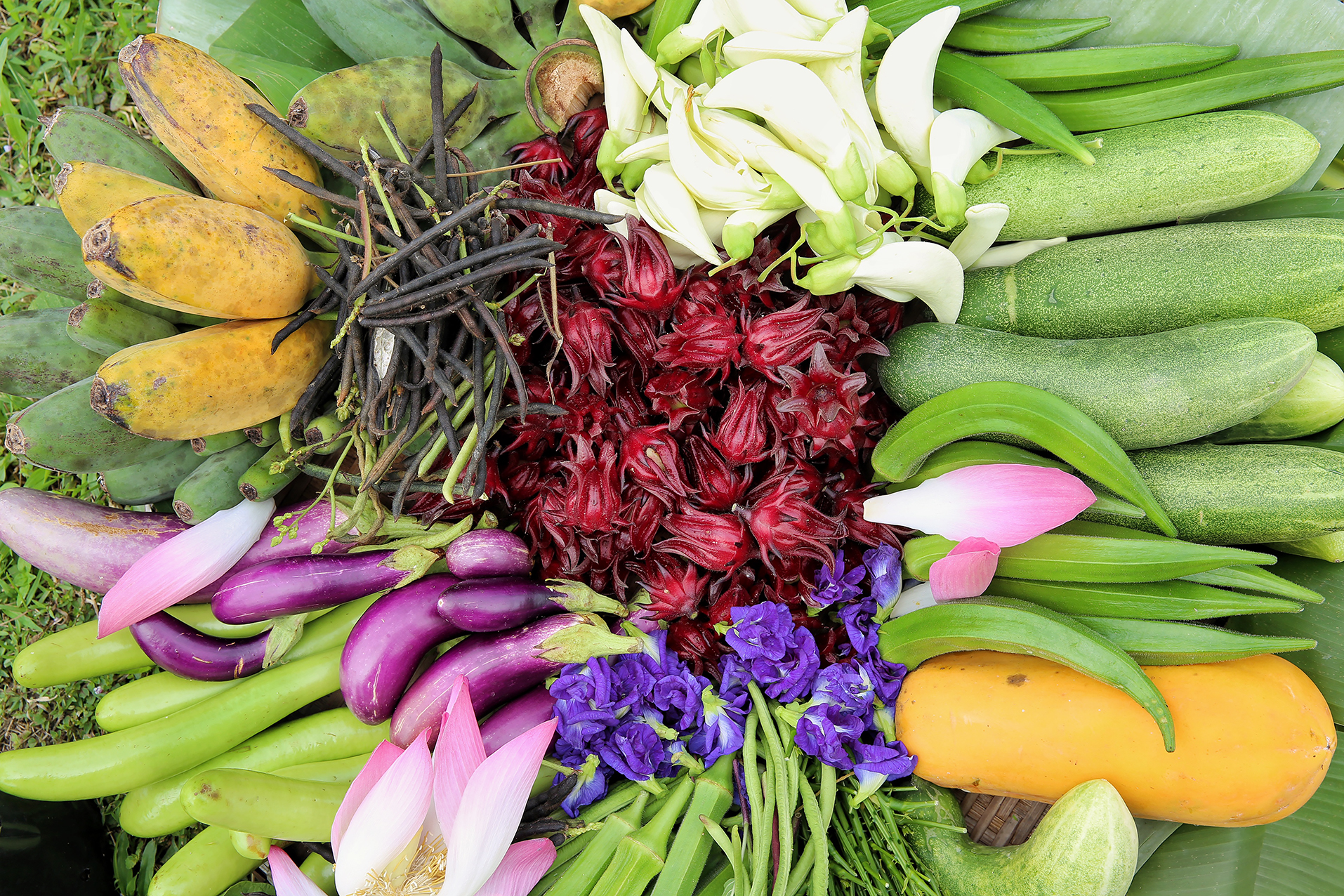
Miki and the team began planting natural nitrogen fixers such as mung beans and tropical acacia trees next to fruit plants to share, rather than compete for, nutrients. They also began mixing a JADAM microbial solution, made from fermenting jungle soil and baked potatoes in water for three days. It’s a quick, low-cost, not to mention extremely effective method for adding microbes into the soil. “We are seeing such a difference between the plants that had the JADAM water versus those that didn’t.”
A farmer since the age of 14, Miki is a constant student, eagerly soaking up intel from the Internet while staying attuned to the language of the land. “Growing up, when my family had a farm, we relied on ‘technology’— machines, fertilisers, chemicals—that we didn’t fully understand. We trusted blindly. We forgot how to look, to slow down, to be present in the garden. When you are present, you will not damage the ecosystem.”
“Sure, it’s more demanding as an energetic exchange with the land,” Miki admits. “My grandfather was on the farm maybe only twice a week—but he was spending so much money on store-bought supplies. Me, I bake a potato, go into the jungle, mix it with water and in three days, I have fertiliser. I have a cutting tool that I sharpen with a stone. It costs 250 baht and will last at least three years. No petrol needed. I spend two hours in the garden and I eat from the garden every day. In the end, that’s what matters: having tasty, nutritious food for our bodies, grown with respect to the plants and to the land.”
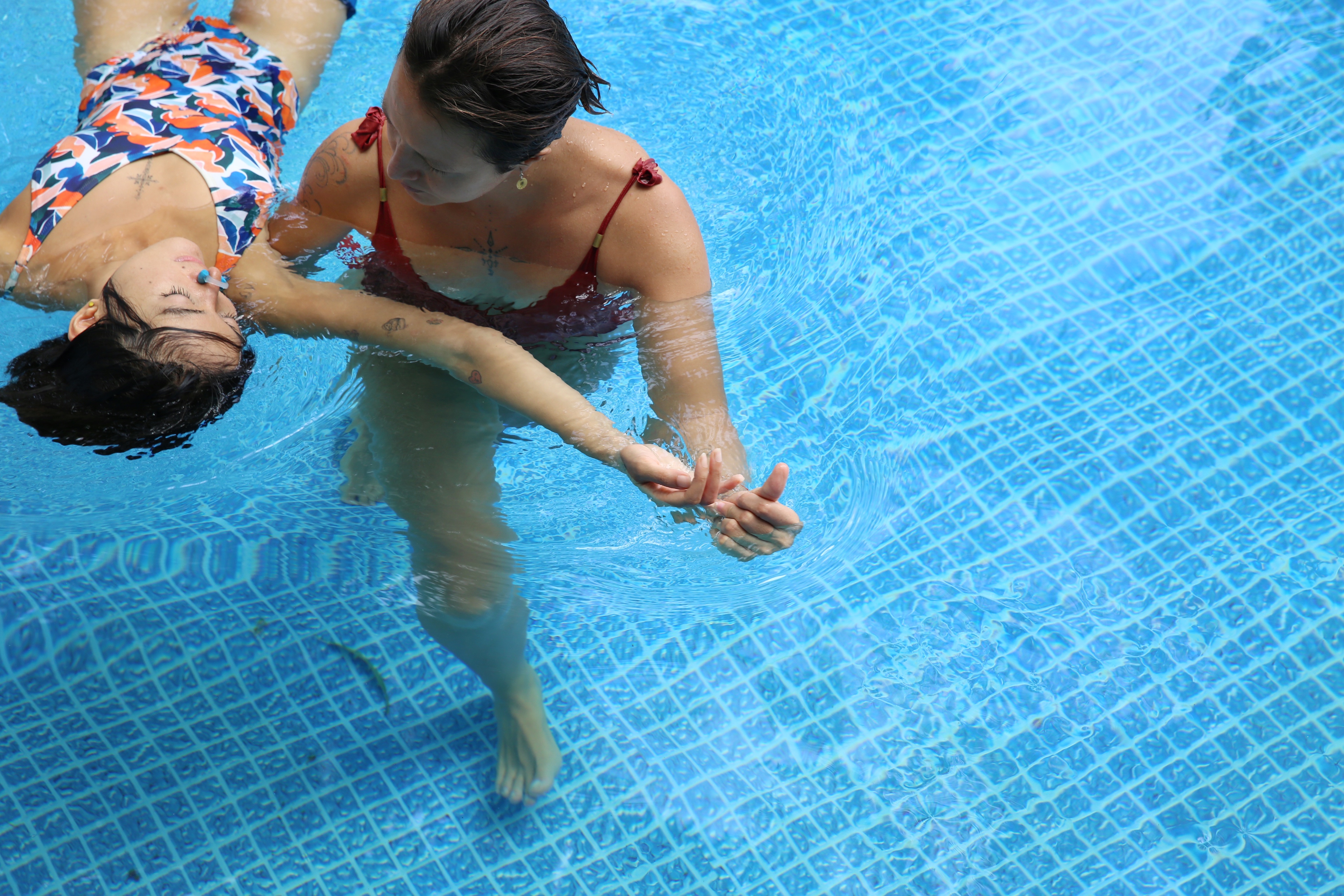
Water therapist Jasmin Ambrosia guides Kim through a session
“The ocean is the mother of all life,” muses Jasmin Ambrosia. “Floating at sea, listening to its essence, we reconnect to the nourishing and gentle quality of life through the waters.” The half-Thai, half-German bodyworker and self-professed water baby has been performing water therapy for five years, a passion nurtured by her time in Portugal, Germany, France and then Pai in the north of Thailand and now in Koh Phangan where she resides.
The earliest form of aquatic bodywork was developed by American massage therapist Harold Dull in 1980. Dull’s trademarked Watsu therapy was a blend of shiatsu massage performed in water, providing a greater range of motion and allowing him to manipulate his patients’ bodies in ways impossible on a traditional massage table. Modern iterations that evolved out of the original Watsu practice include underwater maneuvers, meditation techniques and even elements of shamanism. “Every practitioner brings their own possibilities,” notes Jasmin. “I like to focus on dynamic and fluid motions with meditative stillness releasing the stored tensions and traumas our bodies hold in the gentlest, most comfortable way”.
“You’re literally being held like a baby, a sensation most have forgotten,” she reflects. “We grow up in a society that is not so physically close to each other. This is an opportunity to reconnect to that sense of safety, to receive, to trust—in ourselves and in life.”
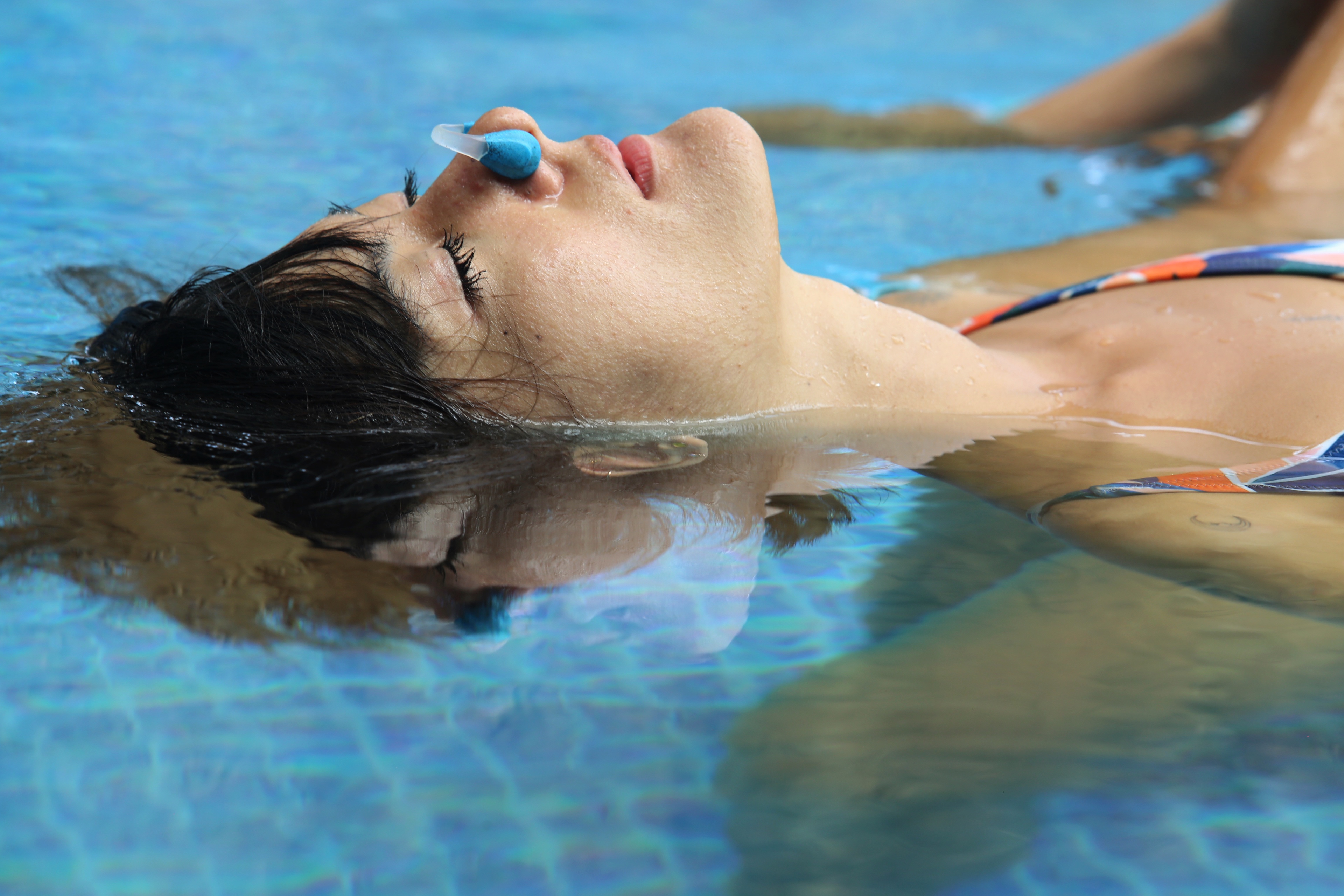
Jasmin and I met at one of the island’s two dedicated water therapy pools, built by water therapist Mario Giovannini for himself and fellow practitioners to use at a nominal fee. The pool provides a controlled environment for the practice—still water at an optimal height, set at 35 degrees Celsius to gently sedate the body—making it suitable for those with anxieties around water such as myself. Although this is our third session, Jasmin remains sensitive to my misgivings about being submerged underwater. She does so only after our agreed-upon signal (a gentle squeeze on my arms) and takes me under slowly. Face partially submerged at first, then fully. A few seconds this time, a few more the next. Soon enough, my mind quiets and I allow myself to be held by the water, Jasmin watching, listening and responding attentively to my needs. I surrender into seaweed mode.
“The water can be so healing and it can be scary, especially if people have had traumatising experiences around water,” Jasmin explains at our post-session debrief. “We don’t always remember these experiences, but our minds can store these memories without us consciously remembering. So, we can have this anxious feeling around water without fully knowing why.”
“Thankfully, water is such a safe, mothering container,” she continues. “Even when fear or discomfort arises, we can remind ourselves that it’s okay to move through it, to overcome fear and reconnect to water and to ourselves in a peaceful way.”
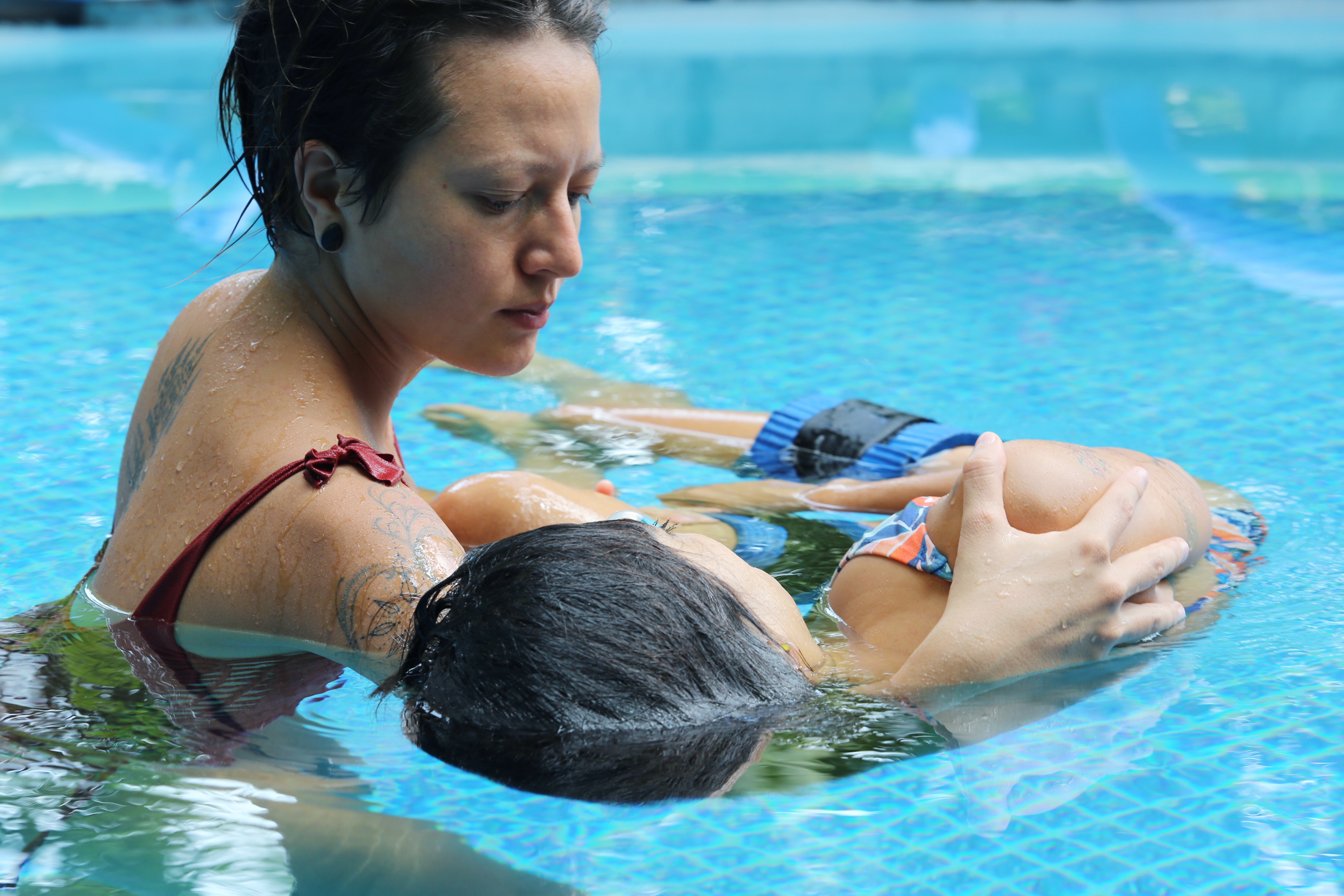
The calm waters and shallow sandbars of Koh Phangan (Phangan actually means ‘sandbar’) lend themselves readily to the practice. Temperatures are ideal from March to August and yield the warmest water for sessions out at sea. Add to that the sizable community of foreign travellers searching for self-care modalities ranging from traditional to transcendental and it’s easy to see why water therapy has become a pervasive part of Koh Phangan’s wellness culture. “Here, you have wide, open, unlimited, natural practising space,” smiles Jasmin. “A mecca for water therapy, as one of my teachers once said. What a dream to turn this island into a destination where people come to receive this beautiful healing.”
Nitipat Pholchai and Milenka Salinas engaged in contact improvisation
Under the foliaged ceiling of the Siam Healing Centre, two figures dance as equals. Who leads and follows is unclear, interchangeable, irrelevant even. Taking turns supporting each other’s weight and surrendering to gravity, occasionally there is slipping, falling and laughing. Their body parts meet in various permutations: cheek-to-shoulder, ear-to-elbow, chin-to-hip. At one point, foreheads touch, fingers tracing simultaneous lines in the sand beneath their feet. The female picks up a flower and places it gently over the male’s eyelids. Breathing in sync, they smile and embrace as the dance ends.
This is a glimpse into contact improvisation (CI), a partnered dance style founded in 1972 by American choreographer Steve Paxton that emphasises the cultivation of body, spatial and relational awareness over technically precise choreography. As Nitipat “Ong” Pholchai, one of the aforementioned dancers, says: “Contact improv is a meditation on the meeting points. A lot of the process is about becoming attuned, to both the brain’s nervous system and bodily awareness.” He explains, “We start by acknowledging sensations in different parts of the body: the joints where movements are initiated, the way the bones connect, the way this sheet we call skin envelopes us. The dance happens in the body—we don’t have to do fancy things. We can already sit here and realise that this is the dance.”
Upon his return to Thailand in 2014, Ong, a professional contemporary dancer with a PhD in Physics from UC Berkeley, found his formal training becoming less relevant, pulled instead into his newfound CI practice. Arriving in Koh Phangan earlier this year, he connected with Milenka Salinas and Sasha Dodo, two professional dancers spearheading the steady growth of the CI community on the island. Since arriving six years ago, the duo have organised workshops, artist residencies, as well as large-scale festivals that, in earlier times, drew in CI dancers from around the world. “Koh Phangan has become an artistic centre, a transformation fueled in part by locals such as Anong Khamjeen, the founder of Siam Healing Centre, and her commitment towards the art,” Milenka explains. “People don’t come here just to party or do yoga, but to develop their artistic vision and collaborate.”
Because CI isn’t codified, there aren’t strict formats, allowing for the freeform creation of events that can be adapted to suit the community’s interests. Formats have ranged from topic-specific workshops to open-ended group jams, to public performances intended to share the practice with an interactive audience. To accommodate the growing interest in a safe and supportive manner, the CI community now hosts bi-monthly beginner’s workshops—Ong has conducted a few in Thai—to help curious newbies ease into the more popular, though often intimidating, jams. “Jams can be quite daunting, so I always recommend receiving some kind of introduction beforehand,” Milenka explains. “At the beginning it’s very liberating, but also terrifying because you want someone to tell you what to do. Once you realise you are responsible for yourself, you are able to embody your potential and then so much more is possible.”
“When we come into contact—in duets, trios or groups—things will arise in terms of interactions and emotions,” adds Ong. “When I’m faced with another body, I realise I don’t have to be me all the time. There’s now the aspect of ‘the other’. At some point, when we realise we have this symbiotic relationship, I can feel their body as mine and I know what my partner’s body is going to do. It takes a while to get into that state but when we do, it’s refreshing, surprising, magical.”
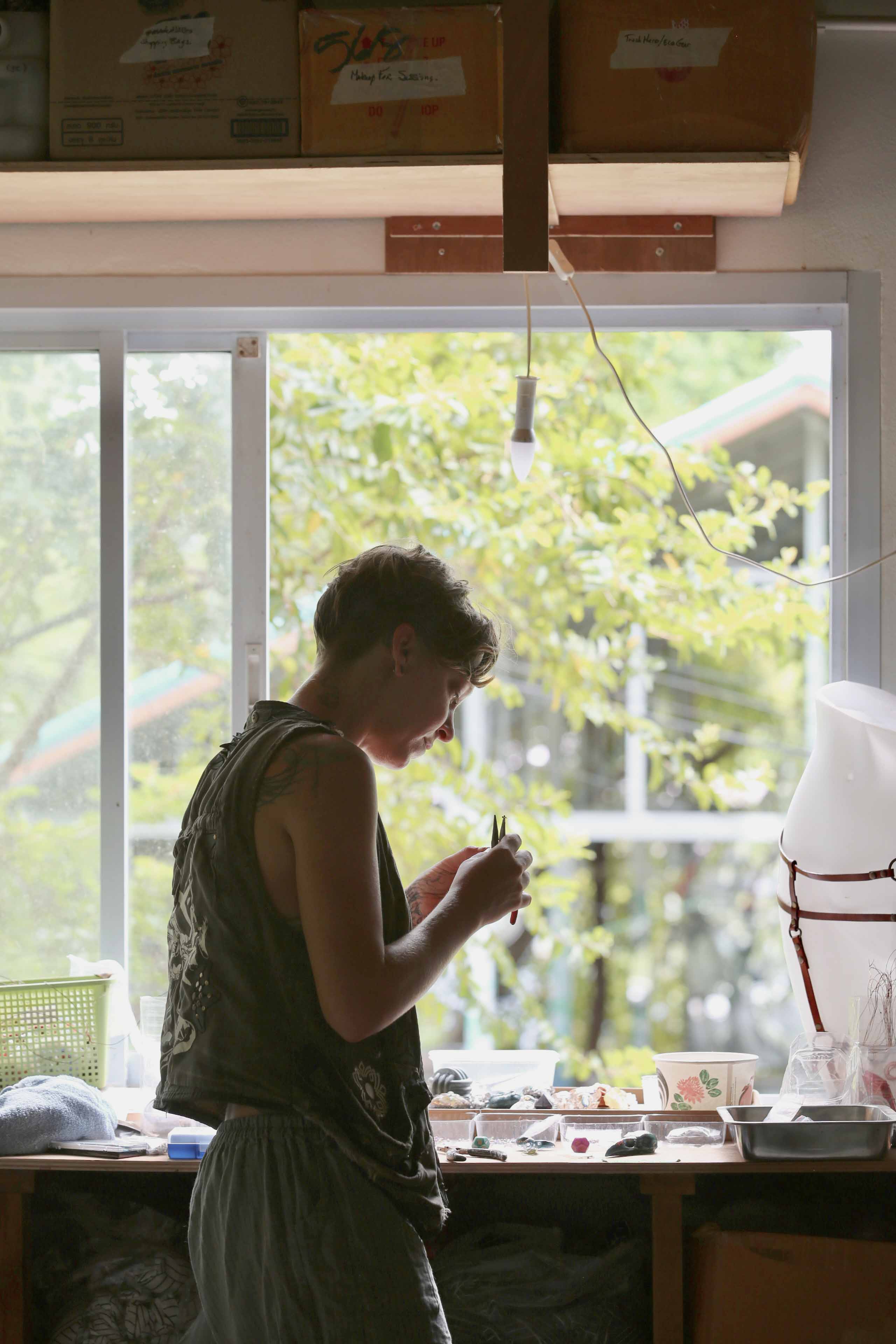
Luka on a mission to give the objects we discard a beautiful second life
What started as a retirement plan born around the campfire at Burning Man in 2010 has become an ever-evolving reality, playing out in Koh Phangan’s quaintly named Coconut Lane. French-born fire performer and “jack of all trades” Luka, together with friends Tobias and Sophia, founded LABracadabra five years ago as “a research centre where different sustainable artists could meet, exchange and learn from each other.”
LABracadabra’s open-plan studio is a circus-inclined, cyberpunk scavenger’s paradise. Mission statements share wall space with posters promoting macrame wire craft and aerial acrobatics. Various corners have been converted into ad-hoc workshops, serviced by tools ranging from humble pliers to 3D printers. There are mannequins wrapped in patchworked fabrics and chainmail bralettes crafted from soda can tabs. This isn’t where trash goes to die, but to be revived—and displayed. “We always have this here,” says Luka, gesturing to a pile of neatly collated trash. “This could be hidden, but it’s here—and it isn’t going to disappear. We created this: we consumed these products and this is the byproduct. Something needs to happen to it.”
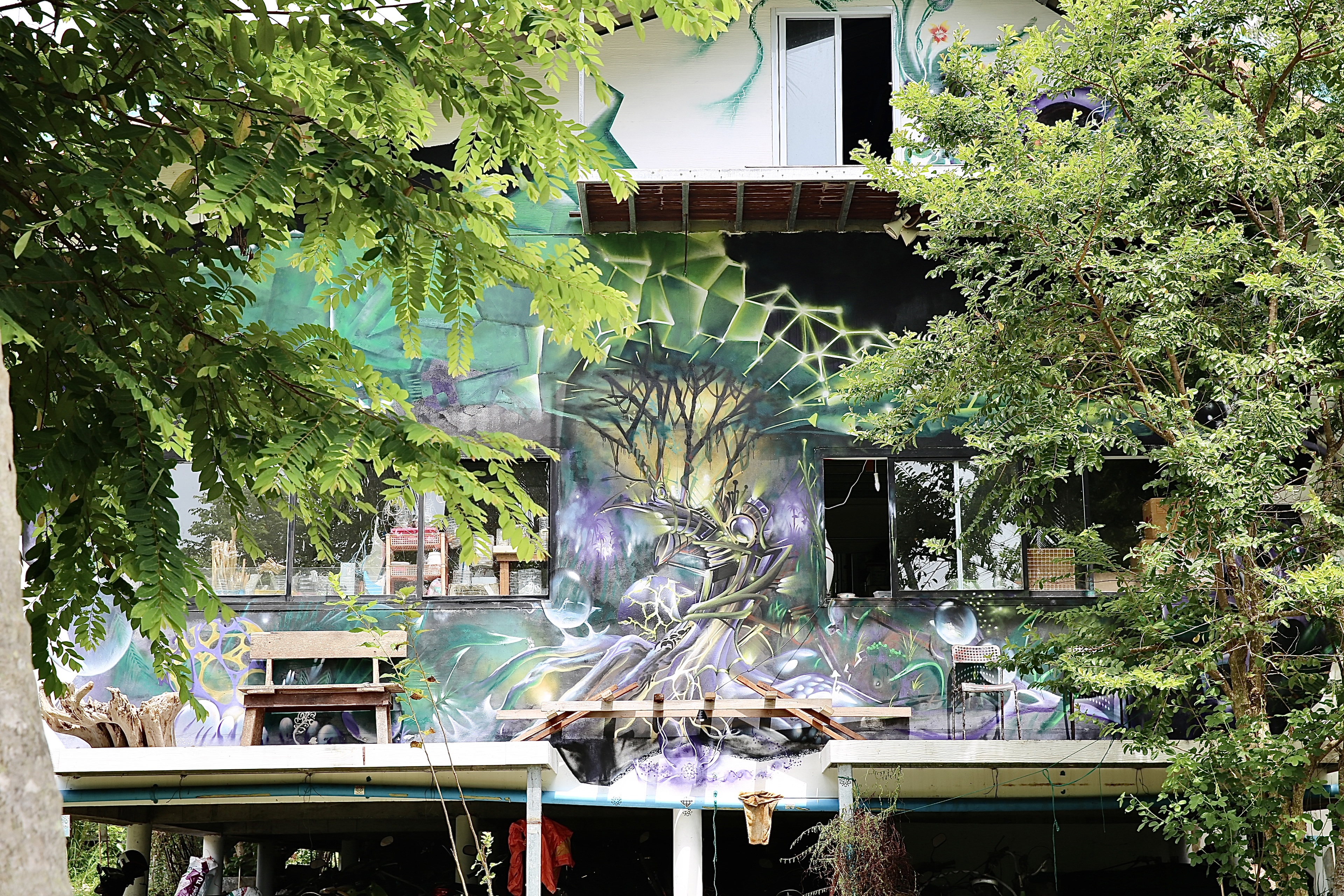
All around and under the studio are designated storage areas for glass bottles, aluminium cans and lots of plastic, all painstakingly cleaned and systematically sorted. “Plastic is not evil,” Luka insists. “Our society wouldn’t be here without plastic. It’s the way we use and dispose it that is wasteful and wrong.” She continues, “Plastic is a durable material. It is totally reusable.” It is this paradigm shift—rethinking trash as raw materials— that LABracadabra aims to cultivate, while providing the guidance and means. The roster of activities runs the gamut from trash sorting meditations and sewing jams to seed swaps and pyro fan dancing. Daily, weekly and monthly passes grant budding creators access to the studio space, along with its ample arsenal of craft machinery.
Visitors drop by, brandishing everything from used tea candles to padded bras. “No need on Koh Phangan,” laughs Luka. “I’m thinking to make an entire armour out of them.” Any fate is better than the island’s overburdened landfills, many of which have been non-operational since Covid-19, resulting in expensive excavation and exporting efforts to move garbage for processing offshore. “What happens when the last island landfill is full?” Luka questions. “There is a complex— and broken—system in place that needs changing on many fronts. Better trash sorting systems, for one. Less willful ignorance, more education and awareness, too.
People wouldn’t be mindlessly disposing their trash if they saw what happens in the landfills and the number of human hands needed to clean their mess.”
“Thankfully, there really has been major action,” says Luka, citing recently improved water waste management efforts, initiated by EcoThailand, that includes water conservation campaigns and the installation of rainwater capture tanks. “So many people with different specialties are helping. Knowing we’re not alone gives us hope.”
Used lighters sorted by colour
With all her eco endeavours, Luka admits she’s far from perfect. “There are things I do that I know are not ideal, such as eating meat or using kerosene to perform,” she discloses. “You have to choose your battles. Some people stop eating meat, stop using plastic, plant trees—there are so many ways to help restore balance. You have to pick the ones you are willing to do. As for the rest, be aware and don’t beat yourself up about it.”
Luka urges not to judge each other’s efforts. “Judging is counterproductive,” she remarks. “We should support and learn from each other, be kind and empathetic to one another’s struggles and differing levels of conscious choices. And we can’t force people to change—we have to be the change, incarnate it and live by example.”
These top 5 barber shops in Bangkok are where gentlemen can elevate ...
Wandering around the globe, try out the signature tastes of cultures across ...
We asked Thai actresses and got real stars, fictional heroes and everything ...
Pets, as cherished members of our families, deserve rights and protections that ...
Sailorr and Molly Santana’s black grills fuse hip-hop swagger with homage to ...
VERY THAI: In this regular column, author Philip Cornwel-Smith explores popular culture and topics ...
Wee use cookies to deliver your best experience on our website. By using our website, you consent to our cookies in accordance with our cookies policy and privacy policy